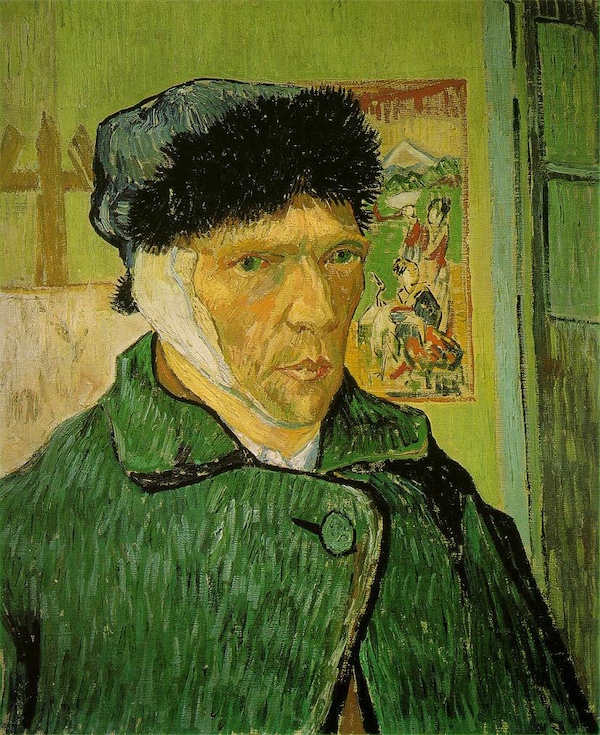You know Vincent Van Gogh, that Dutch painter who passed much of his life in the French Midi painting sunflowers, crows, and starry nights? He was prone to fits of depression, and he once lopped off his own ear. Or maybe not.
In Van Goghs Ohr: Paul Gauguin und der Pakt des Schweigens (Van Gogh’s Ear: Paul Gauguin and the Conspiracy of Silence) Hamburg-based art historians Hans Kaufmann and Rita Wildegans advance an alternate theory. Bärbel Küster, reviewing the book in Süddeutsche Zeitung, summarizes what went down in those mysterious days in Arles, late in 1888 (my translation):
Paul Gauguin resolved to return to Paris for Christmas, and armed with his saber (Gauguin was an excellent fencer), he left the house. His departure had perhaps been preceded by heavy provocation from Van Gogh, which explains his decision to spend the night elsewhere. All worked up, Van Gogh had in his fantasy built this artistic communion to the level of ego-identification, and in one of his outbursts of rage he had already thrown a glass at Gauguin in a local bar. He raced after him to persuade him to return, or perhaps to excuse himself.
But a conflict ensued on the street between Gauguin and Van Gogh not far from the bordello, in the course of which Gauguin drew his saber and struck Van Gogh’s ear from his body. The disconcerted Van Gogh surrendered his ear before returning home, while Gauguin spent the night in a hotel before returning the following morning to the yellow house, where a police commissioner took his testimony about what had transpired. Van Gogh’s last words to Gauguin have been transmitted as: “You keep quiet and I will, too.” Van Gogh never challenged Gauguin’s account of the facts, because he actually did suffer a case of total amnesia, perhaps, or perhaps, as the authors believe, because of a “conspiracy of silence” between the two artists, with Van Gogh feeling a measure of responsibility because of the provocation that preceded the deed.
This account has a ring of plausibility to it. But it is amazing that none of Van Gogh’s (or Gauguin’s) many biographers came across these facts before–Van Gogh’s self-mutilation has long been seen as critical evidence of his mental illness. This account makes it sound more like an affair involving absinthe than mental health.

The incidents occurred in November or early December 1888, and led in the following months to the most pathetic of the Van Gogh self-portraits: the one with the bandaged ear.


